Wherever you are in your product development lifecycle,
Sterling can help.
P: 201-877-5682
F: 201-301-9169
info@sterlingmedicaldevices.com
Tara Miller, MSc, CROM
Medical device manufacturers’ obligation to meet regulatory requirements continues throughout the medical device lifecycle, including the post-production phase (post-market). Medical device manufacturers must implement an effective post-market surveillance system per the various applicable regulations.
What is post-market surveillance?
Post-market surveillance (PMS) is a systematic process to monitor the safety, performance, and quality of devices on the market. In the United States, PMS is required for certain Class II or Class III devices. In the European Union (EU), all devices require PMS. Annex III of Medical Device Regulation (MDR) 2017/745 details the requirements for PMS. There are multiple approaches medical device manufacturers can take to obtain the data to be used as part of their post-market surveillance.
Post-market requirements include post-market surveillance, vigilance reporting, and handling customer complaints and recalls. The purpose is also to provide early warning of product quality issues and for input into the corrective and preventive action process.
Developing a robust post-market surveillance plan is essential for medical device manufacturers to comply with the rigorous requirements of monitoring device safety and quality, especially as mandated in the United States for certain Class II or Class III devices and universally in the European Union under MDR 2017/745 Annex III.
Post-Market Clinical Follow-up (PMCF) is the continuous process of proactive clinical data collection of a CE-marked device. From the moment your medical device is placed on the market and used in clinical practice, real-world data are generated. There are multiple options for selecting the appropriate PMCF methodology, including clinical studies, registries, retrospective data collection, and user surveys.
What is post-market data?
Real-world data (RWD) can be obtained through post-market activities and should be integrated with the risk management system. Data can be monitored, and necessary changes can be implemented in real time.
Post-market surveillance for medical devices is a regulatory requirement in substantial markets, including the United States (US) and European Union (EU)/ However, it is also a good practice and a means for leadership to view device performance post-production.
Utilizing PMS as a proactive activity with consideration for advancements in technology and increased regulatory requirements is vital to reassess the device benefit/risk ratio throughout the device’s lifetime.
Post-market clinical follow-up (PMCF) is only one component of PMS and should begin after the product receives the CE Mark. Some of the data and evidence obtained through PMCF activities include:
The PMCF Plan will outline the process, and the findings will be documented in an evaluation report. The report is part of the device’s technical documentation and the Clinical Evaluation Report (CER).
The EU MDR requires every medical device manufacturer to review the criteria in the European Commission regulation that governs PMCF and determine if their product requires a PMCF study. Not every device will require a study. However, manufacturers must include a rationale in the technical documentation for not conducting a study. The device’s level of risk and novelty are the two primary criteria that determine the need for a study.
Conducting post-market surveillance under EU MDR as a proactive and systematic approach to tie PMS and PMCF data to risk management allows for real-time monitoring and early intervention. Please note that PMCF data intended to demonstrate continuing safety and performance should be sourced from the evaluated device.
For example, data from equivalent or similar devices may be used to update the information relating to the state of the art, identify and further assess relevant safety outcomes, etc.
Additionally, the estimation of risk and risk management using data from existing technologies and state-of-the-art therapeutic standards, including risks and benefits of current treatments, informs risk estimation and approaches to minimize risk.
The benefit/risk profile of the device has been determined to be acceptable in the context of the state of the art, which describes the gold standard (highest level of protection of health and safety) and defines what are considered acceptable risks and side effects, what is considered beneficial, and which duration of effects, is considered acceptable.
Thus, the state-of-the-art yields information has been established to determine the safety and performance of a device that is compatible with current standards (in comparison to available treatment options). The CER has established the state of the art and is used throughout the clinical evaluation.
If you struggle to make sense of PMS and/or PMCF, contact Regulatory and Clinical Affairs and Sterling Medical Devices, now Vantage Medtech. We can help!
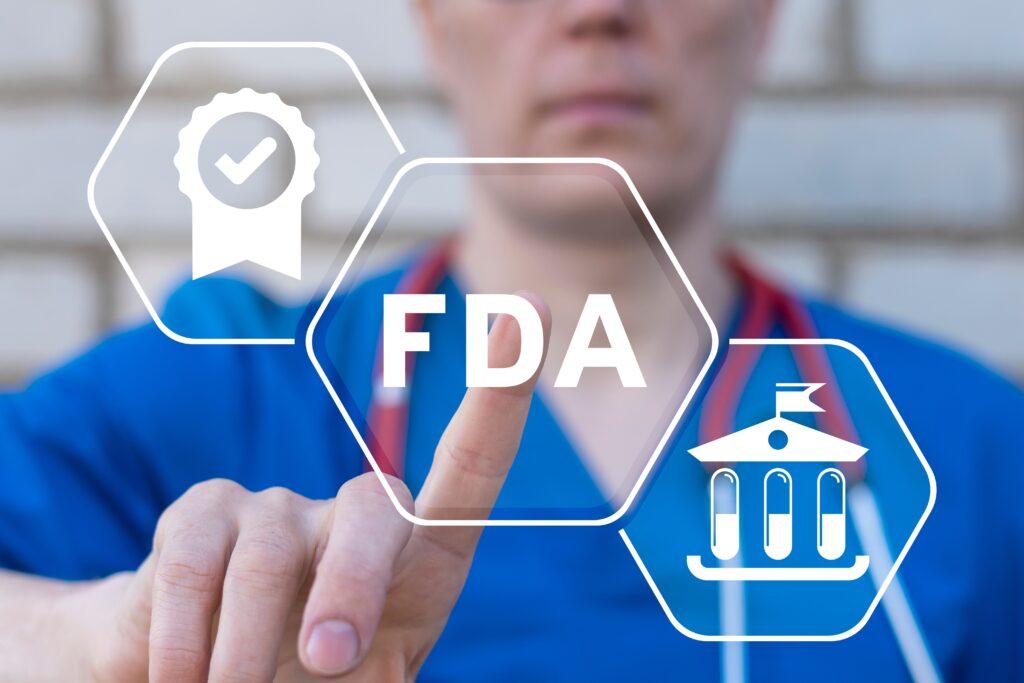
In September 2023, the FDA Office of Combination Products (OCP) released the Application of Human Factors Engineering Principles for Combination Products, a finalized version of the February 2016 draft document. The updated document offers guidance on applying human factors engineering (HFE) principles throughout the combination product’s design and development lifecycle. Developed in an easy-to-read Q&A format, the document clarifies how the unique aspects of combination products influence the considerations within the HFE process.
What’s included in the FDA human factors combination product guidance?
The FDA’s finalized combination product guidance covers HFE principles for combination products that are submitted to the FDA Center for Drug Evaluation and Research (CDER), the Center for Biologics Evaluation and Research (CBER), or the Center for Devices and Radiological Health (CDRH). It answers some of the most common questions related to the various complexities associated with HFE for combination products.
Specifically, the FDA human factors combination product guidance addresses topics related to HFE considerations for combination products, including:
Because combination products are comprised of two or more different types of products, such as a device with a biologic or a device-drug combination, the FDA guidance is based on statutory and regulatory requirements applicable to drugs, devices, and biological products. Even when combined, each component maintains its own specific regulatory standards.
The FDA recommends using the human factors guidance in conjunction with other critical guidance, including Applying Human Factors and Usability Engineering to Medical Devices and Safety Considerations for Product Design to Minimize Medication Errors, as well as existing guidance developed by the CBER, the CDER, the Center for Devices and Radiological Health (CDRH), and the OCP that describe other aspects of product development.Sterling Medical Devices has decades of experience using human factors engineering to improve the design of medical devices. For more information about how to apply the FDA’s human factors guidance to your combination product or medical device, or to discuss other issues related to the FDA’s regulations for software development, contact us here.

In September 2023, the FDA finalized its medical device cybersecurity guidance for premarket submissions. The updated document, “Cybersecurity in Medical Devices: Quality System Considerations and Content of Premarket Submission,” details the information that must be submitted to the Center for Devices and Radiological Health (CDRH) or the Center for Biologics Evaluation and Research (CBER) for the premarket evaluation of products that involve cybersecurity risks. The guidance is applicable to any device or piece of software that can connect to the internet and is susceptible to cybersecurity threats, including but not limited to devices containing software or programmable logic.
Designed to keep patients safe and improve public health protection, the FDA cybersecurity requirements document includes pre-market guidance, as well as guidance related to monitoring, identifying, and addressing cybersecurity vulnerabilities in medical devices once they are on the market.
Specifically, the updated FDA cybersecurity guidance addresses the following submission types:
In the updated cybersecurity requirements, the FDA included recommendations related to comprehensive medical device cybersecurity risk management, continuous improvement throughout the total product life cycle, and incentivize changing marketed and distributed medical devices to reduce risk.
The FDA continues to make efforts to safeguard the safety and efficacy of medical devices at all points in their lifecycle in the face of possible cyber risks by collaborating with business and other federal government entities.
Cybersecurity is more important than ever in the medical device industry. As the FDA continues to make efforts to safeguard the safety and efficacy of medical devices to combat the growing attack surface, it is imperative that you maintain compliance across all points in your products’ lifecycle.
Here are some best practices to guide this process:
Though the above can seem daunting and overwhelming, it doesn’t have to be. With advanced expertise across the regulatory landscape, Sterling can help you complete the necessary steps to ensure your device meets all FDA cybersecurity requirements—all while keeping the design and development process moving forward without disruption.For more information about how to complete a medical device cybersecurity risk assessment, details about the FDA premarket submission cybersecurity guidelines, help ensuring your FDA premarket submission meets cybersecurity requirements, or guidance on how to protect your device from cyber threats, contact us here.
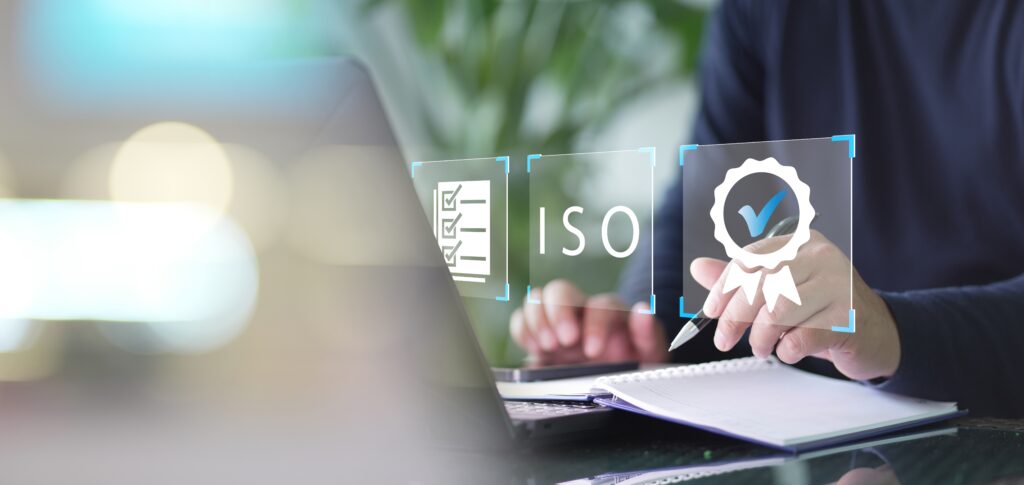
In early September, the International Organization for Standardization (ISO) released new ISO standards for medical devices: the ISO 10993-17:2023 (en) Biological Evaluation of Medical Devices-Part 17—Toxicological Risk Assessment of Medical Device Constituents. This document specifies requirements for a toxicological risk evaluation process of medical device constituents that are used within the biological evaluation process. It includes methods and criteria for identifying if exposure to a component poses any significant toxicological risk. According to ISO 10993-1, the biological evaluation of the finished medical devices may include the toxicological risk assessment.
The procedure outlined in this publication is applicable to data on chemical characterization of medical devices acquired in accordance with ISO 10993-18. A toxicological risk assessment of either the compositional information or analytical chemistry data is needed to determine if the components’ toxicological hazards are minimal or acceptable.
The definition of hazards in ISO 10993-17:2023 emphasizes the elements that potentially cause harm relevant to exposure situations. A trio of criteria play a role in the new protocol’s risk estimation:
The recent updates to ISO 10993-17:2023 have brought about significant changes to the document. To start, the previous title, “Biological Evaluation of Medical Devices-Part 17: Establishment of Allowable Limits for Leachable Substances,” has been replaced with one that better reflects its scope and purpose. The terminology has also been overhauled to include several new terms, including:
Other terms have been removed, including:
These terminology changes were implemented to bring more clarity and relevance of ISO 10993-17:2023 to medical device evaluation.
Additionally, the updated document offers more comprehensive guidance about:
Based on the recently updated FDA guidance, Use of International Standard ISO 10993-1, “Biological evaluation of medical devices-Part 1: Evaluation and testing within a risk management process,” biocompatibility evaluations should be conducted within the framework of a risk management process. Once the risks have been identified, the sponsor should assess what information is already available regarding those risks and identify the knowledge gaps that remain in accordance with the additional biocompatibility standards. A plan should be developed to address the knowledge gaps either by biocompatibility testing or other evaluations that appropriately address the risks.
The guidance is intended for those who have some familiarity with medical devices, specifically toxicologists or other educated and skilled individuals who have the necessary education, work experience, and decision-making skills to apply it.
For more information about the updated standards, how to complete a hazard analysis on your medical device, or help getting FDA pre-market approval, contact us here.

Navigating the complex world of regulatory affairs for medical device software design can feel like trying to find your way out of a complex spider web. Each strand represents a different guideline, standard, or requirement that intertwines with another, demanding meticulous attention to detail. As you move through the process of designing and developing your medical device software, changes may arise—whether from technology updates, feedback loops, or even unforeseen challenges. The process you have in place to manage those changes directly impacts the integrity, functionality, and compliance of the software. Without an adequate change control process, your medical device software may become vulnerable to regulatory penalties, software malfunctions, or compromised patient safety.
Per the FDA 21 CFR Part 820 (Quality System Regulation) and ISO 13485:2016, an effective change control process is crucial in medical device software development. One of the most effective ways to ensure consistent adherence to these standards and maintain product integrity is to implement a structured Software Development Life Cycle (SDLC) model, following an agile methodology. This approach allows you to systematically document, rigorously validate at each phase, and continuously gather feedback. By breaking the development process down into smaller, more manageable steps to support ongoing modifications, upgrades, and iterations, you can ensure that the software remains adaptive and resilient.
Here are some additional considerations to keep in mind:
Navigating changes during the software design and development process for your medical device involves more than understanding and applying applicable regulatory standards; to ensure seamless integration, regulatory compliance, and maintain product integrity, you need to establish a robust change management system that is fluid, comprehensively addressing each phase of the software lifecycle while embedding a proactive approach to risk management.
Not sure where to start in implementing a change control process for your medical device software? Sterling can help. We know all there is to know about software design for medical devices and the comprehensive requirements mandated by dozens of regulatory bodies worldwide. By working with a partner who is well versed in regulatory affairs, your medical device software design and development process—and the changes that occur along the way—will be met with success.
We’ll help you create a change control process for your medical device software that maintains adherence to the strict regulatory regulations, keeps your project on track, and gets you to market quicker. Contact us here to learn more.
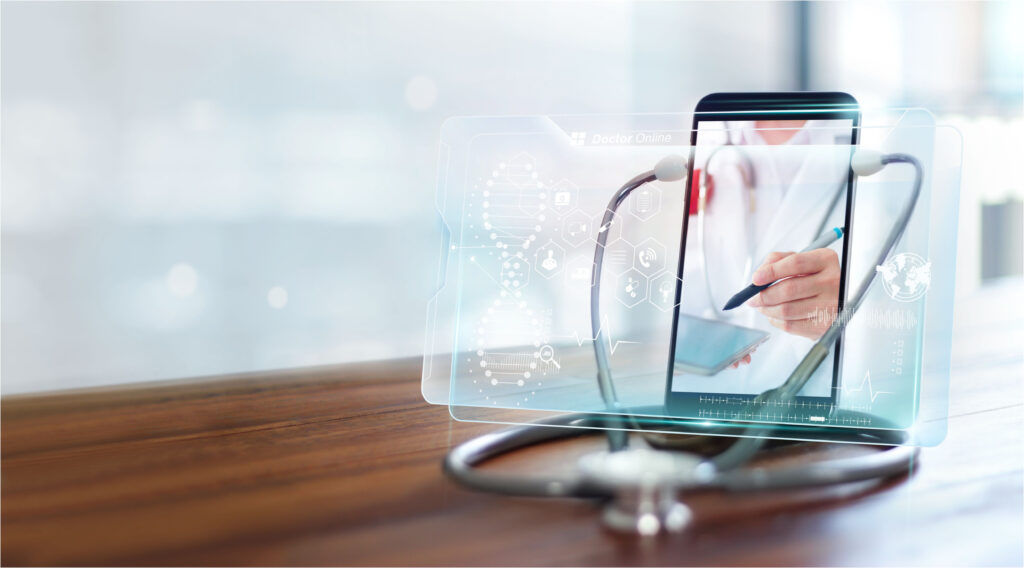
Smartphones are everywhere. They help us pay our bills, keep our calendars, connect us to our colleagues and loved ones, save our most precious memories, and more. But did you know the value of smartphones in health care? In addition to their convenience and availability, smartphone medical devices offer a wide range of capabilities that can revolutionize health care delivery and outcomes for patients. But, to succeed in this emerging market, developers should be aware of and avoid some substantial pitfalls.
A smartphone medical device is a bit of a misnomer because the smartphone usually serves as an accessory or intermediary to connect with an interface of a physical device, implantable device, or other embedded system. But there are a lot of advantages to utilizing a smartphone with a medical device. The first is accessibility – medical professionals are often glued to their mobile devices just like the rest of us. Medical devices for Android phones or iOS operating systems offer physicians portable smartphone medical diagnostics wherever they are. iOS- or Android-based medical devices can collect and communicate critical information on a patient’s health. For example, a smartphone can help screen a patient for a concussion, its microphone can monitor for sleep apnea, or its camera can measure a patient’s heart rate. Smartphone applications also commonly serve as a landing space for wearable medical devices tracking critical patient information. The wearable device sends smartphone data that informs a patient or doctor to help make critical treatment decisions. Using a smartphone with a medical device also allows you to control the product, improve it, and make needed software or firmware updates using Wi-Fi, cellular, or Bluetooth Low Energy (BLE) connections. It’s also simple to do – even if you are designing a product that does not initially include mobile device diagnostics, incorporating a BLE chip to add the capability later is generally unobtrusive and won’t derail your project.
With all the promise the proliferation of smartphones and mobile medical devices holds, there are also some significant potential challenges developers could face if they are not prepared. Here are some tips to help you avoid them and bring an effective and profitable device to market.
Know if your product is a medical device. In recent years, there has been an influx of wellness devices aiming to provide consumers with information on their health, but technically many are not medical devices. It is an important distinction because medical devices are regulated by the U.S. Food and Drug Administration (FDA) in the United States, and they must undergo the FDA’s approval process, often thorough and lengthy, to legally be sold in the U.S. Wellness devices do not. The FDA defines a medical device as “an instrument, apparatus, implement, machine, contrivance, implant, in vitro reagent, or other similar or related article (…) intended for use in the diagnosis of disease or other conditions, or in the cure, mitigation, treatment, or prevention of disease (…) intended to affect the structure or any function of the body.” (1) The challenge is that sometimes a device diagnostic tool uses Android or iOS platforms and toes a very thin line on FDA regulation. For example, one company recently received a warning letter from the FDA regarding the sale of their product that monitored heart rate and blood oxygen levels in infants. The company believed its product fell under the wellness category, but it caught the attention of the FDA which flagged it as a potential smartphone medical device. The manufacturer had to develop a separate product that does not gather the same information while removing its original product from the market as the company navigated the FDA’s regulatory approval process.
Understand your HIPAA responsibilities. The federal Health Insurance Portability and Accountability Act of 1996 (HIPAA) was passed to protect sensitive patient health information. As your smartphone medical device gathers data, it is important to know if you are required to adhere to HIPAA regulations, or your company and reputation could face serious consequences.
Incorporate cybersecurity. Adding robust cybersecurity to your product is essential, not only to protect patient health information and avoid potential HIPAA violations but also to protect other identifying information like social security numbers and credit card information, as well as protect the device’s ability to do what it is supposed to.
The best way to avoid these pitfalls is to work with experienced partners who know how to connect smartphones to medical devices, build the devices integrating the technology, and support your regulatory body submission. Vantage MedTech can be that partner for you, whether you are developing mobile phone diagnostic equipment or utilizing smartphone technology in another way. Our medical device design and development experts can help.
(1) https://www.fda.gov/medical-devices/overview-device-regulation/classify-your-medical-device
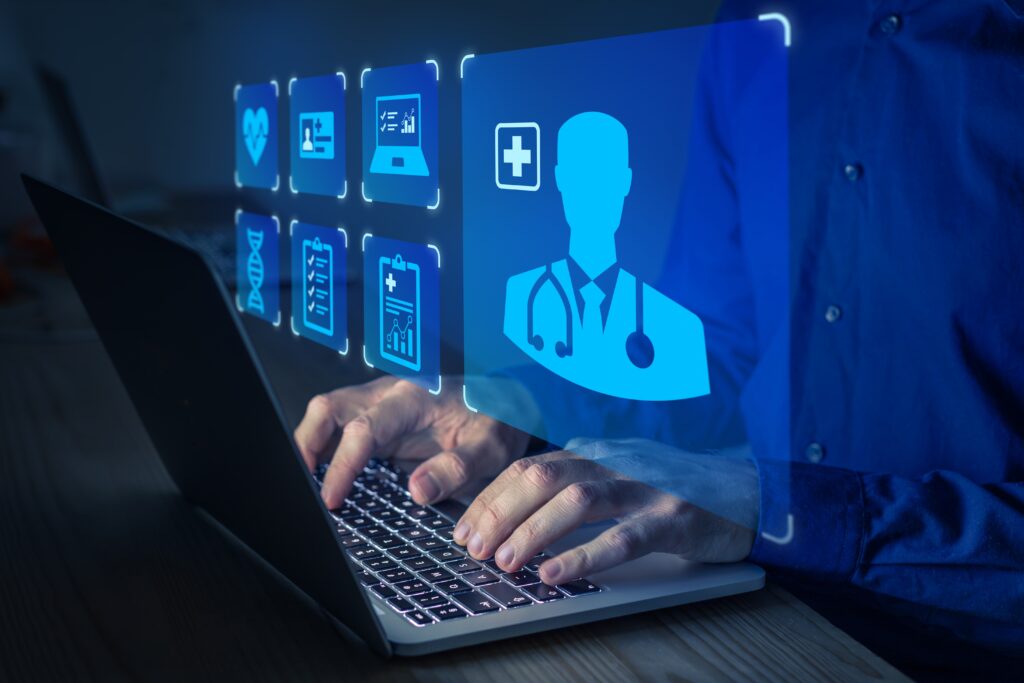
Advancements in technology play a significant role in the medical device industry, especially regarding software. Software is integrated into many medical device products, but it can also be a medical device on its own. As with any medical device sold in the United States, software as a medical device (SaMD) is subject to regulation by the U.S. Food and Drug Administration (FDA), the governing body for medical device approval.
In the summer of 2023, the FDA released updated guidance on the content of premarket submissions for device software functions. Providing a clear outline of medical device regulations as they relate to SaMD, these updates come at a pivotal time in the medical device industry.
The International Medical Device Regulators Forum (IMDRF), a voluntary group of medical device regulators from around the world whose goal is to reach a consensus on medical device regulation, defines software as a medical device as “software intended to be used for one or more medical purposes that perform these purposes without being part of a hardware medical device.” SaMD is a distinctive category within the medical software realm, not to be confused with software applications that are integrated into a medical device and used in its manufacture or maintenance. These integrated applications are not considered SaMD.
Examples of software as a medical device include software that enables a smartphone to view images from a magnetic resonance imaging (MRI) for diagnostic purposes or Computer-Aided Detection (CAD) software that performs image post-processing to help detect breast cancer. Some SaMD uses artificial intelligence (AI), a technology that mimics human activity, decision-making, and learning, as well as machine learning, an AI technique used to design and train software to learn from and act on data.
Establishing federal regulations and approval processes is a time-consuming undertaking, and the FDA often struggles to match the pace of its regulations with technological advancement. As regulators establish medical device software requirements, technology is still rapidly emerging, making the task a moving target. Currently, the following guidance exists in the software as a medical device field:
At Sterling Medical Devices, we partner with businesses of all sizes—from small startups to leading medical device organizations—to design innovative medical devices with successful FDA/CE submissions. Our regulatory experts continually monitor the software as a medical device landscape, along with relevant guidance, standards, regulations, and best practices in the U.S. and abroad. To learn more about how we can help you achieve exceptional results with your medical device system development, contact us here.

Moonachie, NJ and Lenexa, KS, September 12, 2023 – Sterling Medical Devices and RBC Medical Innovations announced today the rebranding of the combined company as Vantage MedTech.
Leveraging decades of industry experience and the specialized expertise of more than 150 medical device engineers, Vantage MedTech is poised to continue providing complete lifecycle solutions to medical technology innovators, from concept through to product realization. The Company’s integrated capabilities include full-systems development utilizing its software, industrial, mechanical and electrical engineering expertise, clinical and commercial scale manufacturing, and regulatory strategy consulting, all supported by the Company’s robust quality systems.
“We are thrilled to announce our new brand at this exciting juncture in our company’s evolution”, said David Montecalvo, CEO. “Vantage offers the MedTech industry a wide range of integrated engineering and technical expertise, resulting in faster time-to-market results for our clients. We are committed to partnering with our clients to accelerate commercialization of their life-changing medical devices and are dedicated to providing these solutions with the highest integrity, quality standards and excellence.”
Vantage MedTech provides comprehensive design and manufacturing services, supporting the advancement of medical technologies from concept through to product realization. Partnering with the world’s most innovative MedTech start-ups and large OEMs, we offer feasibility support, product development and prototyping, clinical and commercial manufacturing, and after-market services to support every phase of the product life cycle. Our clients can leverage our proprietary Advantage Platforms™, accelerating product development timelines. Our manufacturing approach is structured to serve the changing needs of our clients, supporting small-quantity clinical or First-in-Human builds and can scale to accommodate full launch quantities. Vantage MedTech has offices in Moonachie, New Jersey and Lenexa, Kansas. Additional information is available at available at VantageMedTech.com, SterlingMedicalDevices.com, and RBCCorp.com.
Founded in 1988, Ampersand Capital Partners is a middle-market private equity firm with $3 billion of assets under management dedicated to growth-oriented investments in the healthcare sector. With offices in Boston, MA, and Amsterdam, Netherlands, Ampersand leverages a unique blend of private equity and operating experience to build value and drive long-term performance alongside its portfolio company management teams. Ampersand has helped build numerous market-leading companies across each of the firm’s core healthcare sectors. For additional information, visit www.ampersandcapital.com or follow us on LinkedIn.
Contact:
Emily Shores
Vice President- Strategic Marketing and Account Management
info@rbccorp.com or info@sterlingmedicaldevices.com
913.385.5700

Designing and developing a medical device and bringing your product to market are two entirely different tasks—but both can be daunting for the experienced and inexperienced alike. If not managed efficiently and in accordance with regulatory requirements, you may find yourself dealing with delays in time-to-market and time-to-profit, all while incurring additional costs.
Here’s where a medical device outsourcing company comes in handy. By outsourcing your medical device design and development to a medical device consulting firm that brings experience and innovation into the process, you can mitigate these risks, cut costs, and focus on business-critical initiatives knowing your development is being done right the first time. But before you hire a medical device outsourcing company, do your due diligence, ask the right questions, and learn as much as you can about them to ensure they are the right fit.
1. Do they have expertise across all phases of the product lifecycle?
How much experience do they have guiding clients from concept through completion? Ideally, your medical device outsourcing company should be able to address the entire development process, including systems, software, electronics, mechanical, quality, and regulatory compliance.
2. Is their development process backed by regulatory and manufacturing compliance expertise?
Compliance issues can lead to significant launch delays. By working with a partner that’s well versed in medical device regulatory and manufacturing compliance, consistently adheres to stringent guidelines, and integrates risk management practices throughout the entire lifecycle, you’ll obtain approvals the first time around for a faster time-to-market and reduced costs.
3. Are they ISO 13485-registered?
ISO 13485 is an internationally recognized quality standard for the medical device design, development, production, and sale of medical devices. To be certified, a medical device outsourcing company must demonstrate an ability to provide medical devices and related services that consistently meet customer and regulatory requirements. An ISO 13485 certified medical device consulting firm will ensure your Quality Management System supports the safety and efficacy of your medical device and streamline the auditing process.
4. How many projects have they completed?
Look at their track record. Have they been doing this for decades, or are they new to the game? Do they have dozens of project successes under their belt or hundreds? How many clients have they worked with, and do they match the stage you are in? In the complex world of medical device design and development, you need a partner who’s seasoned, with a proven track record of bringing approved, high-quality products to market in a streamlined fashion and without complications—so it’s done right the first time.
5. Are they 100% U.S.-based?
Though this may not be the first question that comes to mind, where your medical device outsourcing company is based matters. Even if they’re headquartered in the US, if their team is spread across the world, this could lead to project delays. Working across various time zones can impede real-time collaboration, hinder communication, and delay decision-making, potentially causing milestones to be missed and extending project timelines. By working with a 100% U.S.-based partner, your device will be poised for a smoother market entry.
6. Are they innovative?
As competition in the medical device market continues to heat up, innovation is crucial. Look for a partner known for delivering superior medical device design, development, and engineering innovation using a customized, out-of-the-box approach. In today’s fast-evolving landscape, your unique needs require innovative solutions, not just a one-size-fits-all approach.
7. Are they experts in both verification and validation processes?
While verification and validation are both elements of the medical device testing process, they serve two very different but equally essential functions. Verification determines whether the product was built right, while validation determines whether the right product was built. When outsourcing to a medical device consulting firm, be sure they have expertise in both essential controls.
Choosing the right medical device outsourcing partner can mean the difference between an innovative product that’s brought to market faster and more cost-effectively and one that is met with process bottlenecks and regulatory hold-ups. By asking the right questions, you will be poised to select a partner who will help you develop a product that aligns with your organization’s strategic objective, supports revenue goals, and protects your brand image.
At Sterling Medical Devices, we’ve been delivering medical device design innovation for more than two decades. We address the whole development process and design products that focus on the user’s needs and requirements while also making smart design choices based on our extensive and diverse experience in product development.Contact us here to discuss how we can help you with your next project.

January 26, 2022

February 18, 2021
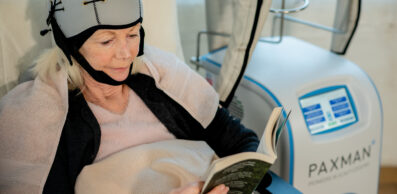
July 12, 2022